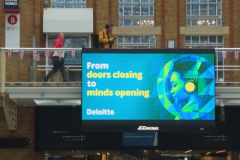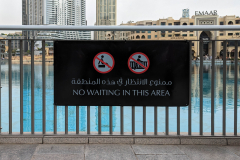Exercise 2: Reflective Day
Research Task: Rhetoric of the Image
Read ‘Rhetoric of the Image’ (Barthes, 1964) and write a reflection in your learning
log.
● How does Barthes define anchorage and relay?
● What is the difference between them?
● Can you come up with some examples of each?
● How might this help your own creative approaches to working with text
and image?
Roland Barthes in ‘Rhetoric of an Image’ considered and analysed the different elements within the nature of a photograph. He explored the ways in which photographs communicate meaning and convey messages. For Barthes, images are not representations of reality but are made up of complex systems that include:
- Semiotics: The study of signs and symbols. Barthes applied semiotic analysis and the elements of semiotics- signs, cultural influence, and codes, to understand how visual images convey meaning.
- Denotation: For Barthes, this was the literal, objective meaning of the elements in an image, without cultural interpretations or baggage to influence.
- Connotation: The images is interpretated through the viewers accumulated knowledge and associations and is heavliy influenced by the cultural and ideological system of signs that operate within a specific cultural context, relying on the viewer’s prior knowledge and associations. For example, in some cultures, the colour red means different things, in China its associated with happiness and prosperity, while in the West mostly means ‘danger’.
- Anchorage: Anchors the image in a specific and explicit meaning, narrowing the possibilities of interpretation-‘does what it says on the tin’. e.g. a picture of a bannana with the caption ‘Yellow Bannana.’
- Linguistic Message: Related to the concept of anchorage, this is the written message within an image, often direct and side by side with the images to convey or lock down its meaning
- Relay: Unlike anchorage , it allows for interpretation and ambiguity and can operate without textual cues allowing for subjective experiences and cultural influence when processing or interpreting images. Relay works across a series of images leaving room for interpretation. This accounts for the malleability of images and the rich interplay between image and viewer and the role of the viewer in deriving meaning.
- Cultural Codes: For Barthes, these codes, which included the shared knowledge of a specific culture, their belief systems and values, help shape the interpretation and understanding of signs and symbols, resulting in the malleability of interpretations of images.
The difference between ‘Anchorage’ and ‘Relay’ is as follows:
Anchorage
Anchorage involves the use of text and or verbal cues (TV) to limit the possible interpretations and anchor the meaning in clarity. For example, in advertising, the advert for ‘Demestos’ anchors the image (and message) by proclaiming ‘Kills all known Germs -dead’. There is no ambiguity- Demestos kills germs. Anchorage includes captions, labels, descriptions and explicit information that directs the viewer towards a specific meaning. It aims to limit any ambiguity and anchor meaning in a very specific way. It is used in a variety of situations including news and media, advertising and product descriptions, wayfinding signage etc.
Relay
For Barthes, the concept of ‘Relay’ was more open-ended and allowed for multiple interpretations and associations, allowing the role of the viewer to take prominence. Usually communicated through a series of images, each builds upon the other. Examples of usage include:
Advertising campaign: A good example of an advertising campaign that used ‘relay’ is Doves ‘Real Beauty’ campaign. Over a period of time and using different images of women of different ages, sizes, and ethnicities, Dove presented Beauty as open-ended and open to interpretation.
Photojournalism essays
Photojournalism essays often use relay by presenting a series of images that collectively tell a story, with each image adding new layers of information, meaning and emotion. Life magazine used this a lot, although their essays also serve as examples of editorial communication and driving a biased of point of view or agenda.
Art Galleries
Exhibitions are curated, and images are presented in a specific sequence to deepen and communicate meaning. The sequence and presentation of the images motivate viewers to engage with the artwork.
Choose a day that you can spend out and about looking with no particular agenda. Be conscious of how images and texts are presented to you in the real world – on billboards, in magazines and newspapers, and online, for example. Make notes in your learning log on some specific examples and reflect upon what impact the text has on how you read the overall message. Consider the following:
- Does the text close the image down (i.e. inform or direct your reading) or open it up (i.e. allow for your personal interpretation to play a part in creating the final meaning)?
- What do you think was the intention of the creator in each instance?













